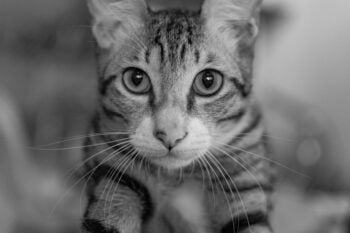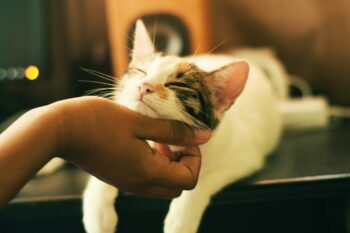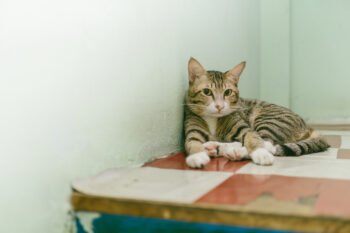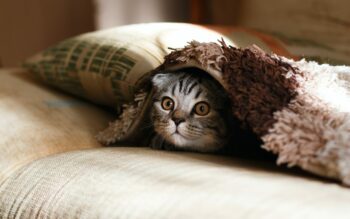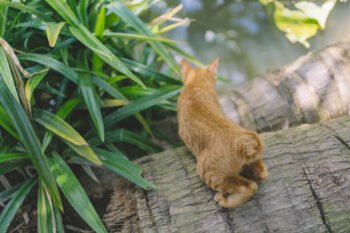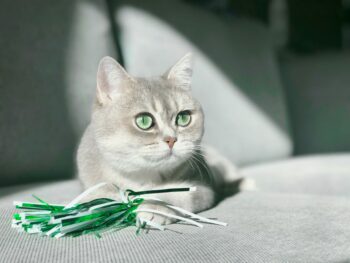Smokey the cat’s “thunderous purr” has been compared to a lawn mower and even to a Boeing 747 coming in to land from a mile away. Now, the 12-year-old female cat from Northampton, U.K., has even more reason to vocalize: Guinness World Records recently named her the world’s loudest purring cat.
“Smokey and I are very excited at being awarded the Guinness World Records title,” says Ruth Adams, Smokey’s owner, who lives at Spring Hill farm in the U.K. Some people, however, said it wasn’t fair, and that the cat is trilling and not purring. But can a cat trill and purr at the same time? And what is a trill anyway?
Trilling, Purring, Crying
According to the Malta Feline Guardians Club, a trill consists of a soft repeated “R” noise. It is similar to the trill used in certain human languages, such as Spanish. For example, say “rapido” aloud with a trilled “R” that necessitates tongue vibration.
When cats purr, on the other hand, they draw air past the voice box. Muscles function like a valve, so when air passes through and the valve opens and closes rapidly, the cat emits a purr sound. Cats can vocalize in many other ways — chirping, yowling, snarling, growling, howling, chuffing and of course, meowing — but purring seems to fascinate us the most. Scientists still don’t fully understand its form and function.
Karen McComb, a reader in behavioral ecology at the University of Sussex, started to pay attention to her own cat’s purring and detected that it often included “an unusual high frequency element, reminiscent of a cry or meow, embedded within the naturally low-pitched purr. The inclusion of this high-frequency element within the purr could serve as a subtle means of exploitation, tapping into an inherent sensitivity that humans and other mammals have to cues relevant in the context of nurturing offspring.”
This double-loud sound, which McComb calls a “solicitation purr,” may be what recently skyrocketed Smokey to Guinness World Record fame.
Challenges Recording Cats
Adams always knew that Smokey was louder than most cats, but the challenge was in proving it. McComb herself faced this challenge, and therefore had to recruit her own cat and that of a colleague. She also trained other cat owners to use the equipment so they could record their own pets. Adams instead approached nearby Northampton College to provide specialized sound equipment.
Surrounded by local VIP witnesses, including a British Airways captain, Smokey miraculously purred away, reaching 73 decibels according to Northampton’s experts. Guinness, however, documented the sound as reaching 67.7 decibels, perhaps due to certain measurement restrictions. Says Ray Meadham, curriculum manager in music at the college: “You don’t get asked to help out with a world record attempt every day, so of course we jumped at the chance.” He and his colleagues used a Rode microphone, Logic music software and a Category 1 sound level meter (used in recording studios) to analyze the cat’s purring. “Luckily, Smokey was in top form and rose to the challenge.”
Putting Cat Sounds Into Perspective
Check out how Smokey’s trilly purring compares to other measured sounds:
- Total silence: 0 decibels
- Smokey: 67.7 to 73 decibels
- Lawn mower: 90 decibels
- Car horn: 110 decibels
- Rock concert: 120 decibels (plus or minus)
- Blue whales and fin whales:188 decibels
Why Are Some Cats so Loud?
If your cat suddenly goes from quiet to constant, loud meowing, a veterinary visit may be in order. Certain health disorders, such as hyperthyroidism, can cause excessive meowing.
For a healthy cat, loud “solicitation purring is probably more acceptable to humans than overt meowing,” says McComb. Purring seems to have a natural, soothing effect; so in essence, cats sweet talk us in order to capture our attention. “Not all cats use this solicitation purring,” says McComb. “It seems to most often develop in cats that have a one-on-one with their owners rather than in large households where there is a lot going on and such purring might get overlooked. Meowing seems to be more common in these situations.”


